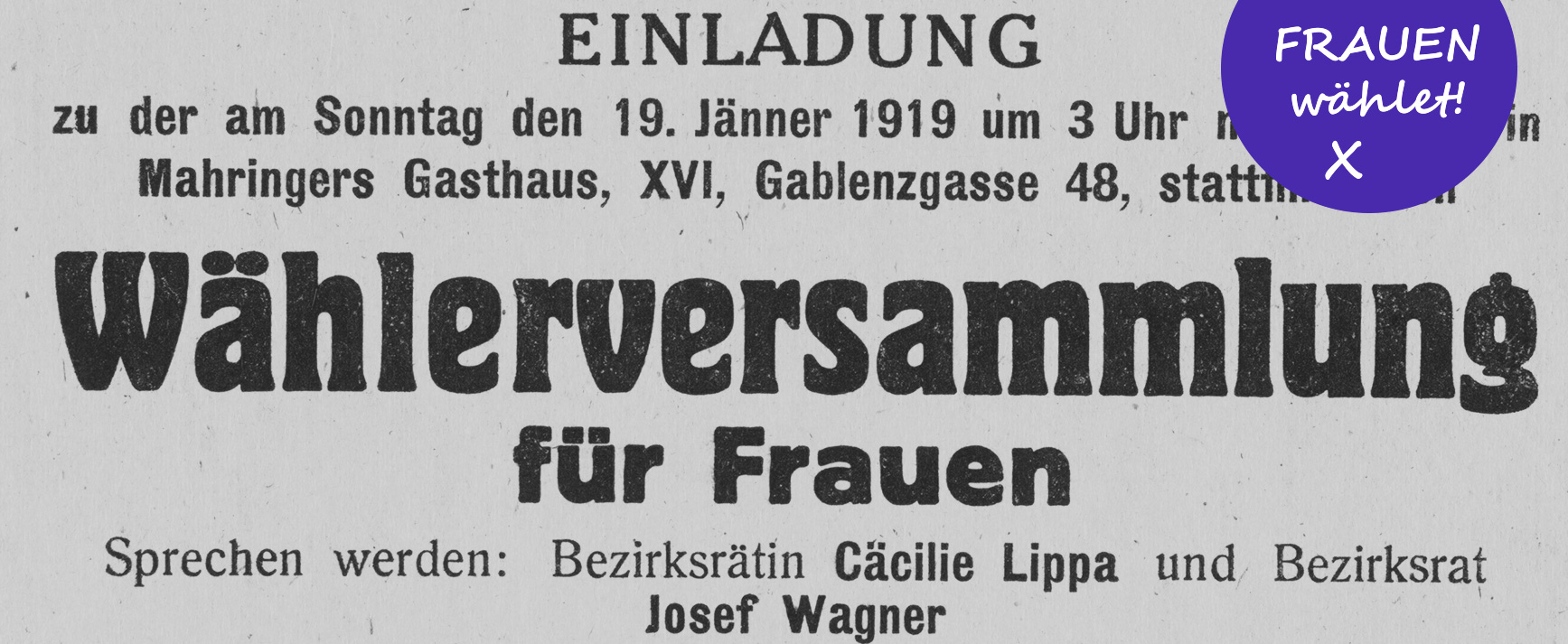
Women as voters and politicians – 1918 to 1919
With the First World War the activities to achieve votes for women were reduced. Public gatherings were prohibited during the war. From May 1917, when the work of the parliament resumed, women’s organisations submitted joint petitions for women’s suffrage. Rallies for peace and women’s suffrage, initially from the Social Democratic side and then by liberal middle-class women, were now on the agenda. The political turmoil generated by the Russian Revolution also affected further progress.
On 12 November 1918, after the collapse of the Habsburg Monarchy, the Republic of German-Austria was proclaimed and the Provisional National Assembly decided to grant the right to vote and to stand for election to all citizens of full age without gender discrimination. The principles of the right to vote for the National Assembly to be elected were defined on that date in Article 9 of the Law on the Form of State and Government. Already at the end of October 1918, the Provisional National Assembly had lifted the restrictions on freedom of association and assembly. The National Constituent Assembly election would finally be held on 16 February 1919.
Historically, the introduction of women’s suffrage is a consequence of the political and social upheaval at the end of the First World War. The decisive factors were the altered political power situation and the strong position of the Social Democrats. But women’s suffrage was also the result of the agitation by women – mainly from the Social Democratic Women’s Movement, but also from the liberal women's movement – for the opportunity to participate in politics.
